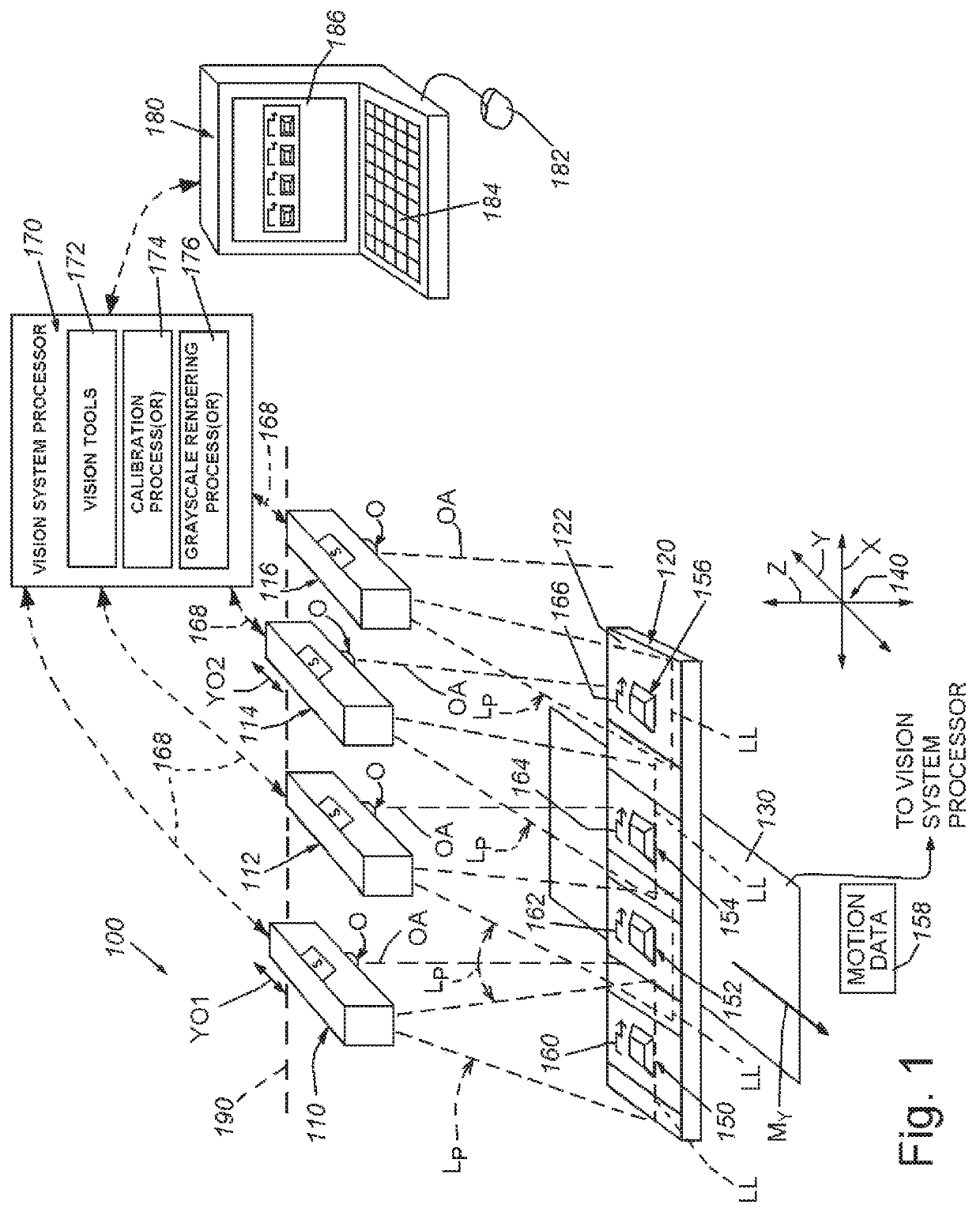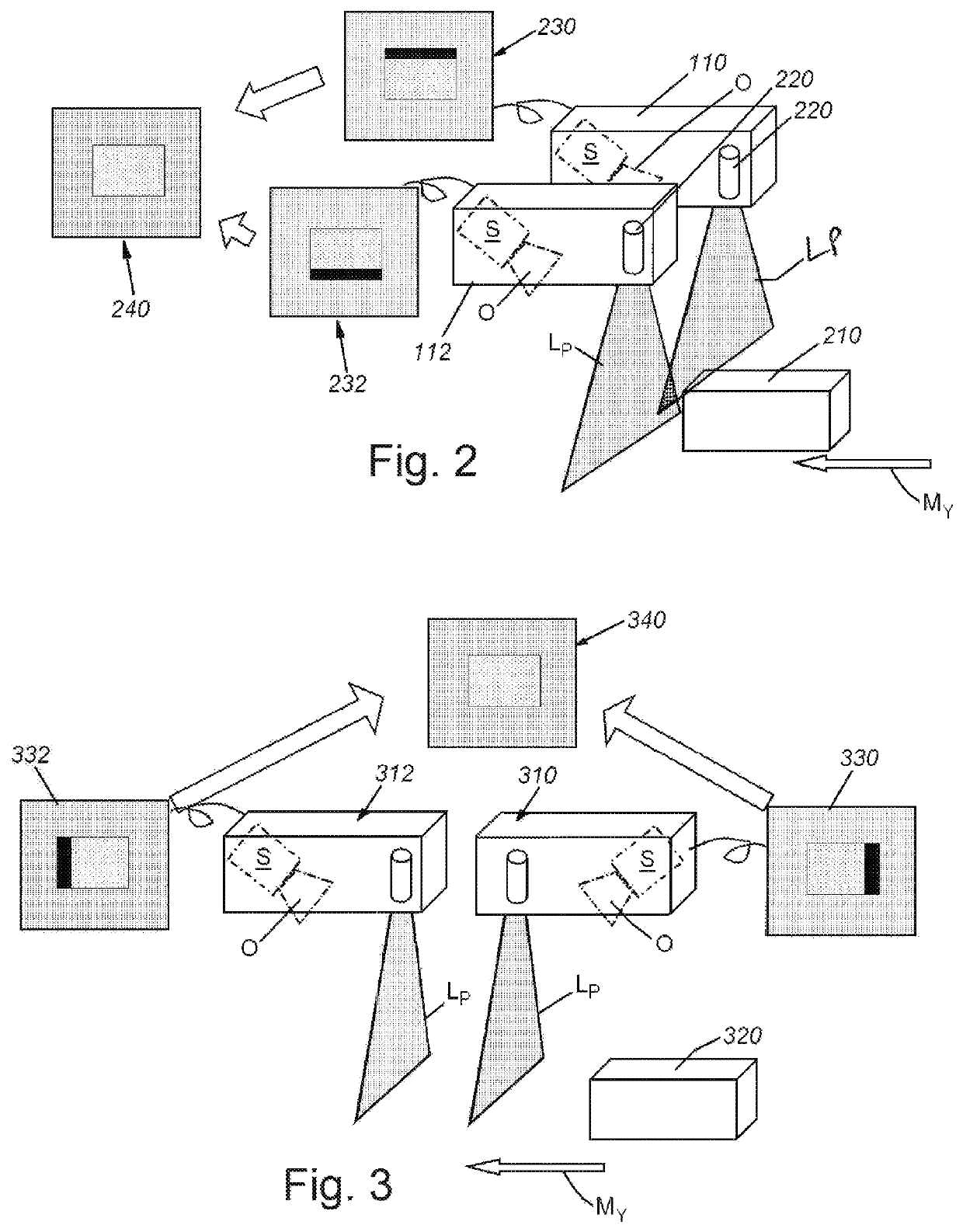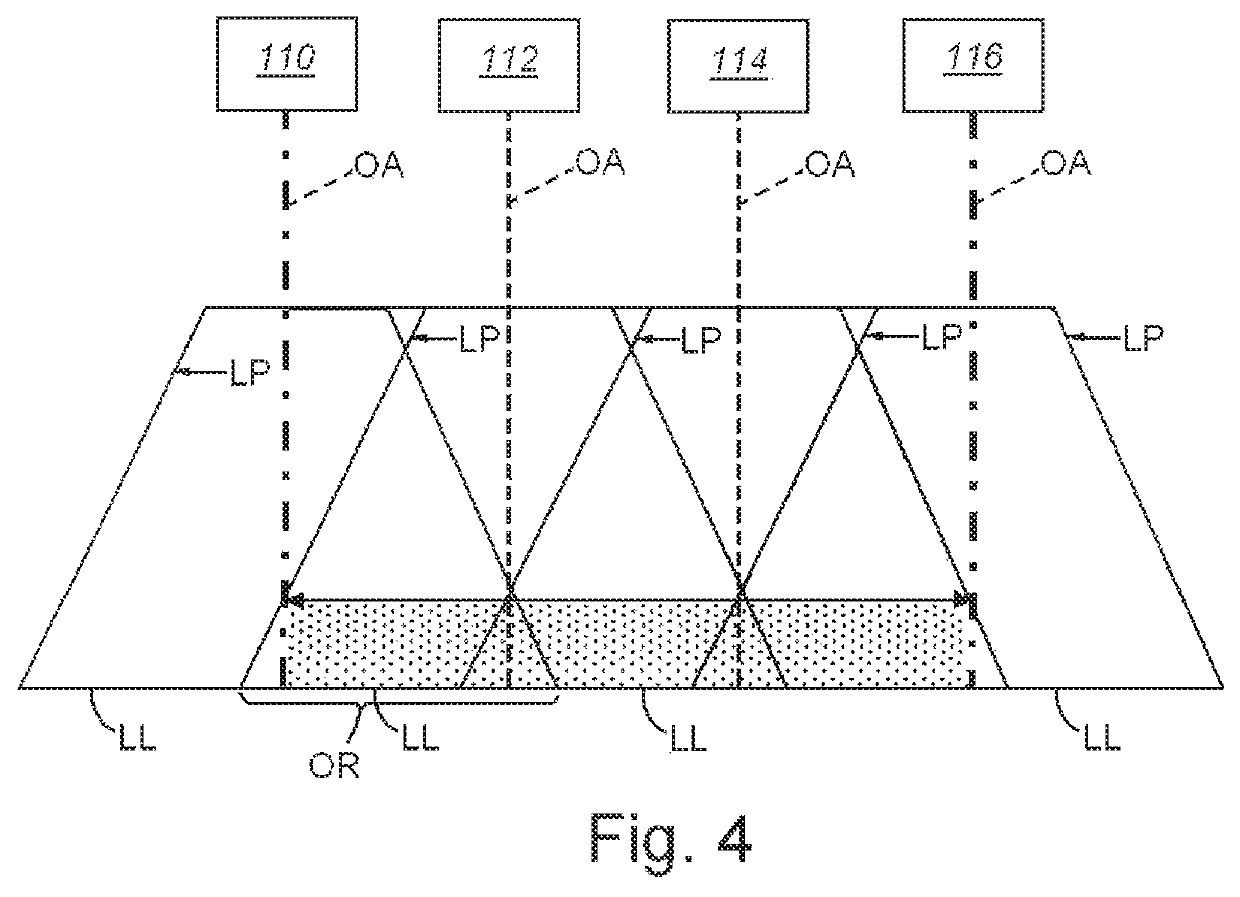System and method for calibrating one or more 3D sensors mounted on a moving manipulator
a technology of moving manipulators and sensors, applied in the field of vision systems using one or more three-dimensional (3d) vision system cameras, can solve the problems of limited use of such an arrangement of sensors by users, high difficulty in calibrating all sensors, time-consuming setup and maintenance, etc., and achieves accurate factory-based calibration and straightforward setup.
- Summary
- Abstract
- Description
- Claims
- Application Information
AI Technical Summary
Benefits of technology
Problems solved by technology
Method used
Image
Examples
Embodiment Construction
I. System Overview
[0054]FIG. 1 details a vision system arrangement 100 that includes a plurality of (3D) displacement sensors 110, 112, 114 and 116. In this exemplary arrangement, four sensors are depicted. However at least two and greater than four sensors can be employed as the exemplary “plurality” as defined herein. The sensors 110, 112, 114, 116 can be arranged in a variety of orientations that are typically side-by-side with respect to each other as shown to define a widened (in the x-axis direction as defined below) field of view (FOV). The 3D sensors 110, 112, 114 and 116 in this exemplary arrangement are implemented as so-called laser profilers or laser displacement sensors that rely upon relative motion (arrow My) generated by a motion conveyance that acts along the y-axis direction between the sensor and the object 120 under inspection to provide a range image (also termed herein a “3D image”) of the object 120. As shown, in this embodiment, motion My is generated by the ...
PUM
 Login to View More
Login to View More Abstract
Description
Claims
Application Information
 Login to View More
Login to View More - R&D
- Intellectual Property
- Life Sciences
- Materials
- Tech Scout
- Unparalleled Data Quality
- Higher Quality Content
- 60% Fewer Hallucinations
Browse by: Latest US Patents, China's latest patents, Technical Efficacy Thesaurus, Application Domain, Technology Topic, Popular Technical Reports.
© 2025 PatSnap. All rights reserved.Legal|Privacy policy|Modern Slavery Act Transparency Statement|Sitemap|About US| Contact US: help@patsnap.com



